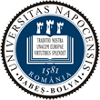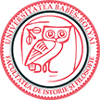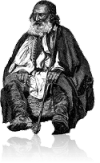The project "RESTORY – Recovering Past Stories for the Future: A Synergistic Approach to Textual and Oral Heritage of Small Communities" launched at the beginning of 2024 and brings together 20 partners—universities, public institutions, companies, and NGOs—from 12 European countries. RESTORY is the first Research and Innovation project on cultural heritage won by an academic institution in Romania, as well as the first investigation of this kind coordinated by UBB within the Horizon Europe Program.
The core of the project consists of a series of case studies inspired by the historical experience of communities inhabited by the Transylvanian Saxons, who founded prosperous settlements in medieval Romania—settlements still admired today. This model of effective practices in the sustainable management of material and human resources placed a strong emphasis on local school education, natural circular economy processes, and affective communication strategies in relation to the inhabited space.
Such societal practices, established early and developed alongside Romanians, Hungarians, and Roma who lived or still live in the same settlements—stories found in present-day accounts or in the writings of these communities, preserved in archives and little-explored libraries—form a remarkable symbolic vocabulary of local cultural heritage and territorial identity. The primary area of investigation will focus on both urban and rural contexts: Sighișoara (Mureș County), Cincu (Brașov County), and Jelna (Bistrița-Năsăud County). Over the course of the project, additional settlements with a similar historical profile may also be included, such as the city of Sebeș (Alba County) or villages like Brateiu and Buzd (both in Sibiu County).
Ten parallel research actions will later be undertaken in Estonia, Finland, France, Ireland, Iceland, Italy, Poland, Portugal, and Ukraine, all aiming to validate the relevance and general applicability of medieval, modern, and recent traditions from Transylvania. These studies will also seek to capture the strategies developed for better management of limited resources, especially during prolonged periods of crisis.
Ultimately, this research effort to recover resource-maximization solutions developed intuitively by small communities over long periods will facilitate the transfer of knowledge from the academic environment to local memory-preserving institutions, such as museums, archives, and libraries. This will enable today's citizens to actively and emotionally contribute to the sustainable development of their inherited heritage.
Therefore, the RESTORY project targets both institutional user groups and visitors to cultural sites by involving them in consultancy activities related to the management of historical artifacts, as well as through educational campaigns and training sessions aimed at generating new skills and jobs within the cultural heritage economy. Another key element is providing support to museum institutions in implementing open-access policies and securing funding opportunities.
Technical Details About the Project
The project "RESTORY – Recovering Past Stories for the Future: A Synergistic Approach to Textual and Oral Heritage of Small Communities" (contract no. 101132781) will be implemented from January 1, 2024, to December 31, 2026, by Babeș-Bolyai University, acting as the coordinator of a consortium comprising 20 partners, including academic entities, public and museum institutions, companies, and non-governmental organizations.
The €3,000,000 funding was awarded following a competitive project call under the European Commission’s Horizon Europe program, specifically within the call "Cultural Heritage in Transformation – Facing Change with Confidence" (HORIZON-CL2-2023-HERITAGE-01-04). This funding mechanism aims—through innovative scientific research tools and dynamic communication strategies—to harness the vast potential of European cultural traditions and integrate the resulting knowledge into the development of sustainable strategies and effective public policies for addressing contemporary societal challenges.
The RESTORY consortium brings together 20 organizations from 12 countries:
Babeș-Bolyai University, Romania
Technical University Cluj-Napoca, Romania
Sighișoara City Hall, Romania
Civitas Foundation for Civil Society, Romania
School for Creative Acts, Romania
23 Film Studio & Media, Romania
Università degli Studi di Roma „La Sapienza”, Italy
Università degli Studi di Cagliari, Italy
Consorzio Materahub Industrie Culturali e Creative, Italy
Université Libre de Bruxelles, Belgium
Maison du Patrimoine Médiéval Mosan, Belgium
Centre National de la Recherche Scientifique, France
Háskóli Íslands, Iceland
Universidade de Coimbra, Portugal
Helsingin Yliopisto, Finland
Tartu Ülikool, Estonia
Atlantic Technological University, Ireland
Uniwersytet Im. Adama Mickiewicza w Poznaniu, Poland
Asset Technology, Greece
Bukovinian State Medical University, Ukraine.
Project website: https://restory-heritage.eu/






